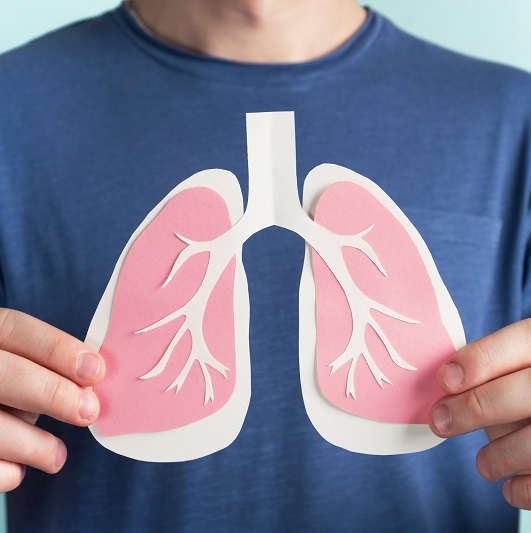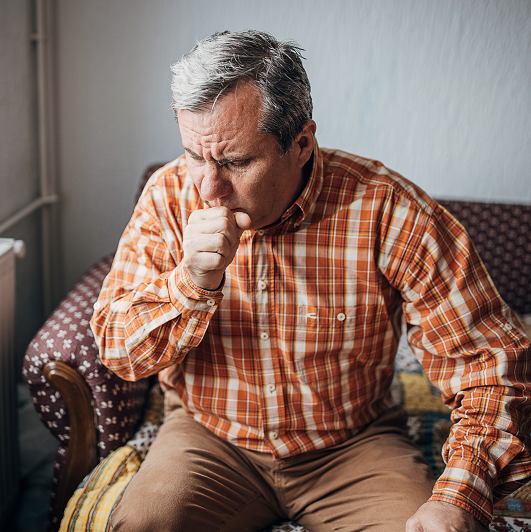Interstitial Lung Disease Care in New Jersey
What is Interstitial Lung Disease (ILD)?
Interstitial lung disease (ILD) is a group of over 200 conditions that cause inflammation or scarring (fibrosis) in the lungs. Over time, this scarring can make it harder to breathe and affect your ability to absorb oxygen. Some ILDs develop slowly, while others come on quickly. Many are chronic, but early diagnosis and treatment can improve symptoms and slow the disease.
Types of Interstitial Lung Disease
Some of the most common types of ILD include:
- Connective tissue disease-associated ILD (CTD-ILD): Lung damage linked to autoimmune conditions such as rheumatoid arthritis or scleroderma
- Cystic lung diseases and rare ILDs: This includes Langerhan cell histiocytosis (LCH) and lymphangioleiomyomatosis (LAM)
- Drug-induced ILD: Lung issues caused by certain medications, such as chemotherapy or amiodarone
- Hypersensitivity pneumonitis (HP): Inflammation or scarring caused by repeated exposure to irritants, such as mold or bird droppings
- Idiopathic pulmonary fibrosis (IPF): Progressive scarring of the lungs with no known cause
- Sarcoidosis: An inflammatory disease that can affect multiple organs, including the lungs
Diagnosing Interstitial Lung Disease
There’s no single test for ILD. Diagnosing the condition often takes several steps to rule out other causes and identify the exact type of ILD. Your doctor may recommend:
- A full review of your medical history and symptoms
- High-resolution chest CT scan
- Pulmonary function tests to check how well your lungs work
- Blood work to look for signs of inflammation or autoimmune disease
- A bronchoscopy or lung biopsy
- A six-minute walk test to assess your stamina and oxygen levels during activity
- An exposure history review, including smoking and work-related factors
Your care team may also refer you to specialists such as rheumatologists or infectious disease experts for further evaluation.
Treating Interstitial Lung Disease
There is no one-size-fits-all treatment for ILD. The best approach depends on the cause, severity, and how the disease is affecting your life. Treatment options may include:
- Anti-inflammatory medications or antifibrotic therapies to reduce lung scarring or slow its progression
- Immunosuppressants for ILD caused by autoimmune disease
- Supplemental oxygen to help with breathing and activity
- Pulmonary rehabilitation to improve lung function and stamina
- Referral for lung transplant evaluation, if needed
- Clinical trials for access to new treatments and research breakthroughs
Your doctor will work closely with you to create a plan that meets your specific needs and goals.
Living With ILD
Living with ILD can be challenging, but you're not alone. Managing the disease often means building a long-term partnership with your care team. Lifestyle changes, emotional support and ongoing care can all help you live better with ILD. Many people find comfort in joining support groups or pulmonary rehab programs to stay active and connected.
Frequently Asked ILD Questions
Symptoms can vary, but many people with ILD experience:
- Chest discomfort
- Fatigue or weakness
- Persistent dry cough
- Shortness of breath, especially during activity
Some ILDs are linked to autoimmune or connective tissue diseases and may also cause:
- Acid reflux or heartburn
- Joint or muscle pain
- Skin thickening or rashes
- Trouble swallowing
If you’re having any of these symptoms, it’s important to talk to your doctor. Early diagnosis and treatment can improve your quality of life and slow disease progression.
Talk to your doctor if you:
- Have shortness of breath that’s getting worse
- Experience a dry cough that doesn’t go away
- Have an autoimmune disease and are noticing breathing changes
- Have had past exposure to environmental or occupational irritants
For more information, learn about the Interstitial Lung Disease Program at Hackensack University Medical Center.







